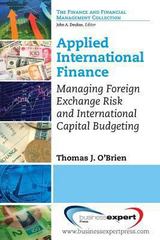Question
During the last few years, Harrison Henry Industries has been too constrained by the high cost of capital to make many capital investments. Recently, though,
During the last few years, Harrison Henry Industries has been too constrained by the high cost of capital to make many capital investments. Recently, though, capital costs have been declining, and the company has decided to look seriously at a major expansion program that had been proposed by the marketing department. Assume that you are an assistant to Marvin Patrick, the financial vice-president. Your first task is to estimate Harrison Henry' cost of capital. Marvin has provided data that he believes is relevant to your task.
(1) The firm's tax rate is 38%
(2) The current price of Harrison's 10 percent coupon, semiannual payment, noncallable bonds with 12 years remaining to maturity is $1282.76.
(3) The current price of the firms 7 percent, $28 par value, quarterly dividend, perpetual preferred stock is $15.86. Harrison would incur flotation costs equal to 6 percent of the proceeds on a new issue.
(4) Harrison' common stock is currently selling at $45 per share. Its last dividend (Do) was $2.20, and dividends are expected to grow at a constant rate of 6% in the foreseeable future. Harrisons' beta is 1.15, the yield on T-bonds is 3 percent, and the market risk premium is estimated to be 7.5 percent.
(5) Harrisons' target capital structure is 35 percent long-term debt, 10 percent preferred stock, and 55 percent common equity.
(6) Harrison does not use short-term interest-bearing debt on a permanent basis. New bonds would be privately placed with no flotation costs.
To structure the task somewhat, Marvin has asked you to answer the following questions.
a. What is the market interest rate on Harrisons' debt and its component cost of debt?
b. (1.) What are the two primary ways companies raise common equity?
(2.) Why is there a cost associated with reinvested earnings?
c.Harrisson doesnt plan to issue new shares of common stock. Using the CAPM approach, what is Harrisons' estimated cost of equity?
d. What is your final estimate for the cost of equity, rs?
e. What is Harrisin' sweighted average cost of capital (WACC)?
f. What factors influence a companys WACC?
g. What procedures are used to determine the risk-adjusted cost of capital for a particular division? What approaches are used to measure a divisions beta?
h. Explain in words why new common stock that is raised externally has a higher percentage cost than equity that is raised internally by reinvesting earnings.
i. (1.) Harrison estimates that if it issues new common stock, the flotation cost will be 15 percent. Harrison incorporates the flotation costs into the DCF approach. What is the estimated cost of newly issued stock, taking into account the flotation cost?
j. What common mistakes in estimating the WACC should Harrison avoid?
Step by Step Solution
There are 3 Steps involved in it
Step: 1

Get Instant Access to Expert-Tailored Solutions
See step-by-step solutions with expert insights and AI powered tools for academic success
Step: 2

Step: 3

Ace Your Homework with AI
Get the answers you need in no time with our AI-driven, step-by-step assistance
Get Started


